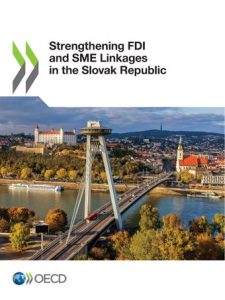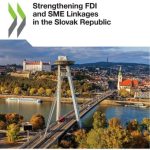
Strengthening FDI and SME Linkages in the Slovak Republic
 OECD relesed a report assessing the linkages between foreign direct investment (FDI) and domestic small and medium-sized enterprises (SMEs) in the Slovak Republic. It provides policy recommendations to national and subnational governments on how to foster productivity and innovation spillovers from FDI to the local economy.
OECD relesed a report assessing the linkages between foreign direct investment (FDI) and domestic small and medium-sized enterprises (SMEs) in the Slovak Republic. It provides policy recommendations to national and subnational governments on how to foster productivity and innovation spillovers from FDI to the local economy.
The report looks at the quality of investment the country attracts, the absorptive capacity of Slovak SMEs, and a broad range of economic, business and policy conditions that can strengthen knowledge and technology diffusion from FDI to domestic SMEs. It also provides a diagnostic assessment of the core FDI-SME spillover diffusion channels, namely value chain linkages, strategic partnerships, labour mobility, and competition and imitation effects. The report provides an overview of the Slovak policy arrangements for promoting international investment, SME performance and innovation, and regional development. It does so by taking a close look at multi-level coordination, stakeholder consultation and impact evaluation. It then reviews the policy mix in support FDI-SME linkages and spillovers and proposes concrete areas for further policy reforms. The last chapter introduces a regional lens, focusing on the regions of Banská Bystrica and Košice. This report is part of a multi-year European Commission-OECD project on strengthening FDI-SME ecosystems and is the second pilot review for future country assessments.
Related Post
Equipping SMEs with the skills to...
SMEs and entrepreneurs heavily depend on skills to stay competitive and face greater challenges than larger firms in accessing and retaining...
The future of entrepreneurship with AI
AI-native startups are redefining the nature of entrepreneurship through accelerated scaling. With leaner teams, evolving funding dynamics, ...
Micro and small businesses can act...
In an international context where conflicts have reached their highest level since the Second World War, what role can micro, small, and med...





